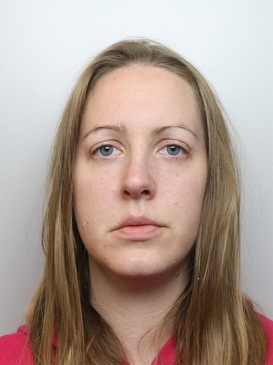Lucy Letby: Difference between revisions - Wikipedia
 Article Images
Article Images
Content deleted Content added
Line 211: The use of statistical analysis by the prosecution has attracted criticism from various experts on statistics. In 2024, the [[Royal Statistical Society]] issued a statement that they were "aware of concerns raised by some RSS members and the wider statistical community" and welcomed an investigation.<ref>{{cite web |title=RSS statement on the statistical aspects of the Lucy Letby case |url=https://rss.org.uk/news-publication/news-publications/2024/general-news/rss-statement-on-the-statistical-aspects-of-the-lu/ |website=RSS |access-date=3 August 2024}}</ref> One of the key pieces of evidence was a chart that showed Letby had been present for a number of deaths and other incidents on the neo-natal unit. However, the chart omitted deaths and other incidents that had occurred when Letby was not present.<ref>{{cite news |last1=Grimes |first1=David R. |title=David Robert Grimes: Lucy Letby is Britain's most prolific serial child killer. But doubts linger about the evidence |url=https://www.irishtimes.com/opinion/2024/07/20/lucy-letby-was-convicted-of-being-britains-most-prolific-serial-child-killer-but-was-she-guilty/ |access-date=3 August 2024 |archive-url=https://archive.today/20240720062551/https://www.irishtimes.com/opinion/2024/07/20/lucy-letby-was-convicted-of-being-britains-most-prolific-serial-child-killer-but-was-she-guilty/|archive-date=20 July 2024 |newspaper=The Irish Times |language=en}}</ref><ref name="Knap"/><ref name="TNY"/> Burkhard Schafer, a professor specialising in the intersection of law and science at the [[University of Edinburgh]], argued that the shift chart was a result of the [[Texas sharpshooter fallacy]].<ref name="TNY"/> Former [[University of Oxford]] mathematics lecturer, Alexander Coward showed modelling to ''[[The Telegraph (newspaper)|The Telegraph]]'' which he argues demonstrates that, using an identical number of nurses and incident rate to those at the Countess's unit, through random chance alone any nurse could be linked to as many incidents as Letby was. "You could make a chart like that for any nurse in any hospital". He continued, "You don't need a PhD in statistics or maths to know that [the chart shown to the jury] is dreadful. This illustrates what you can do with cherry-picked data." Professor of mathematics at the [[University of Bristol]], [[Peter Green (statistician)|Peter Green]] told the paper, "The spreadsheet duty roster is almost a textbook example which I would give to my students of how not to collect and present data."<ref name="Knap">{{cite news|url=https://www.telegraph.co.uk/news/2024/07/09/lucy-letby-serial-killer-or-miscarriage-justice-victim/|title=Lucy Letby: Serial killer or a miscarriage of justice?|work=The Telegraph|date=9 July 2024|last1=Knapton|first1=Sarah|access-date=10 July 2024|archive-date=9 July 2024|archive-url=https://web.archive.org/web/20240709111717/https://www.telegraph.co.uk/news/2024/07/09/lucy-letby-serial-killer-or-miscarriage-justice-victim/|url-status=live}}</ref> Similarly, medical statistics professor [[Jane Hutton]] has been highly critical of the statistical evidence presented, including the shift chart, as examples of the [[Base rate fallacy|prosecutor's fallacy]].<ref name="conn-and-lawrence-2024"> {{cite news | last1 = Conn | first1 = David | |||